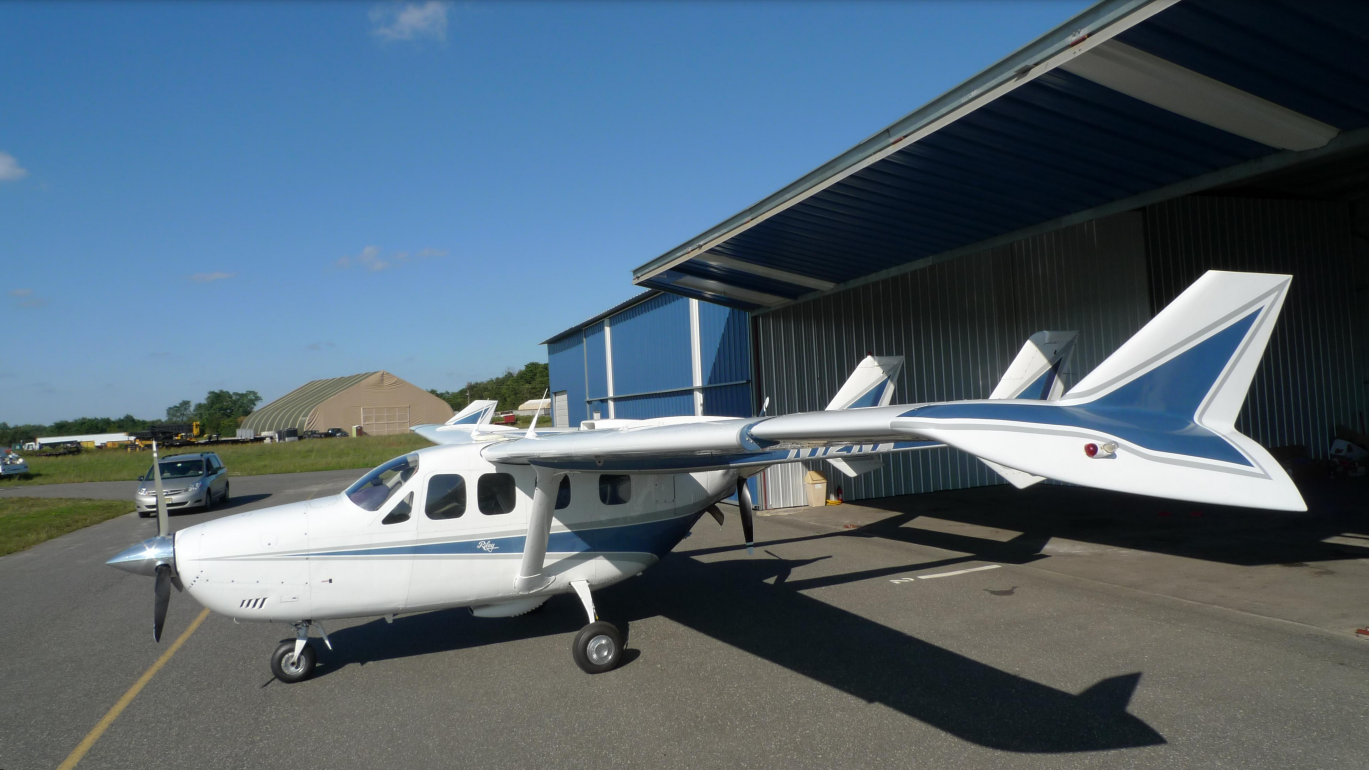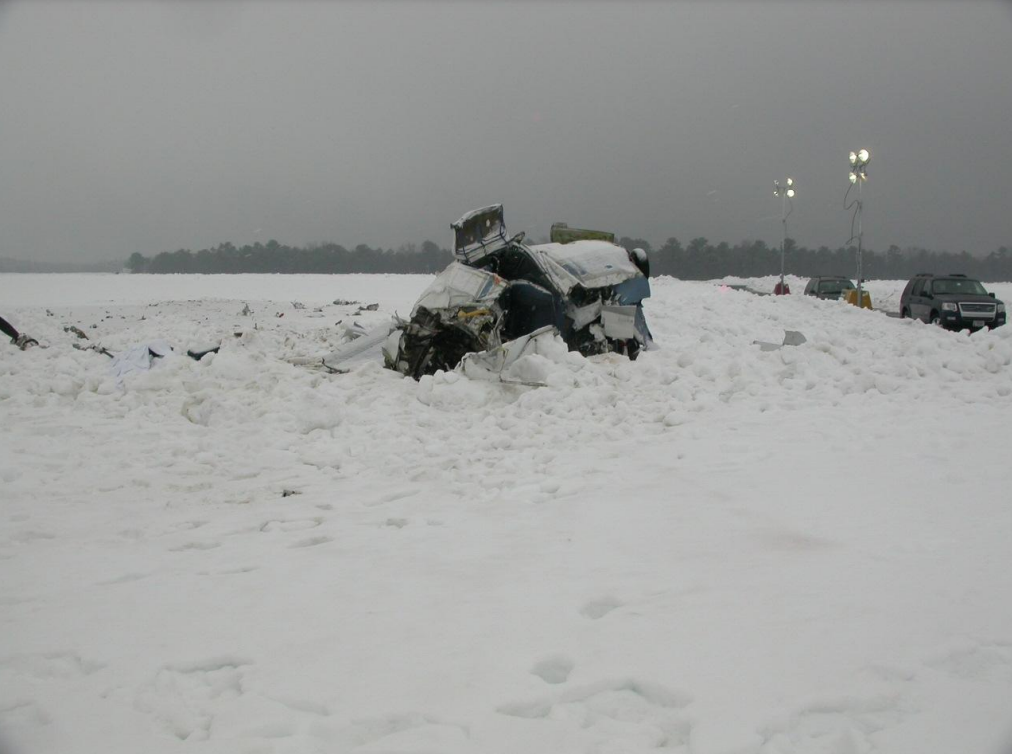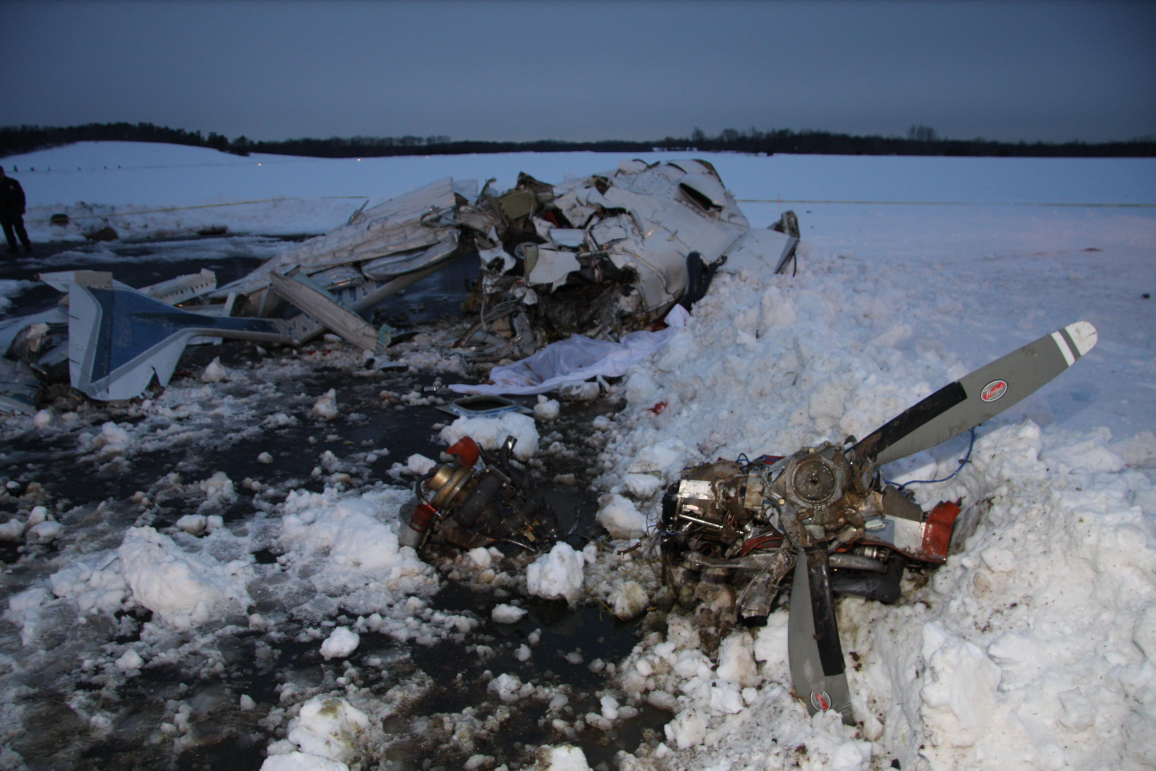
ASN Wikibase Occurrence # 72736
This information is added by users of ASN. Neither ASN nor the Flight Safety Foundation are responsible for the completeness or correctness of this information.
If you feel this information is incomplete or incorrect, you can submit corrected information.
| Date: | Monday 15 February 2010 |
| Time: | 15:42 |
| Type: |  Cessna T337G Turbo Super Skymaster |
| Owner/operator: | Private |
| Registration: | N12NA |
| MSN: | P3370020 |
| Year of manufacture: | 1973 |
| Total airframe hrs: | 2462 hours |
| Engine model: | Continental TSIO-520 SER |
| Fatalities: | Fatalities: 5 / Occupants: 5 |
| Aircraft damage: | Substantial |
| Category: | Accident |
| Location: | Monmouth Executive Airport (BLM/KBLM), NJ -
 United States of America United States of America
|
| Phase: | Manoeuvring (airshow, firefighting, ag.ops.) |
| Nature: | Private |
| Departure airport: | Belmar/Farmingdale-Monmouth Executive Airport, NJ (BLM/KBLM) |
| Belmar/Farmingdale-Monmouth Executive Airport, NJ (BLM/KBLM) | |
| Investigating agency: | NTSB |
| Confidence Rating: |
On February 15, 2010, about 1542 eastern standard time, a Cessna T337G, N12NA, collided with terrain following an in-flight separation of the outboard section of the right wing while overflying runway 32 at the Monmouth County Executive Airport (BLM), Farmingdale, New Jersey. The three adults and two minors on board were killed. The airplane incurred substantial damage. The flight was operated by a private individual under the provisions of Title 14 Code of Federal Regulations Part 91 as a personal flight. Visual meteorological conditions prevailed and no flight plan was filed for the local flight. The flight originated at 1526 from the same airport.
One of the pilots announced over the airport’s common traffic advisory frequency his intention to perform a low pass over the runway, and ground witnesses observed the airplane fly about 50 feet above the runway with the landing gear retracted. Global positioning system data recovered from the wreckage indicated that the airplane’s ground speed at that time was about 160 knots (kts) (184 mph). Witnesses observed the airplane’s nose pitch up just before the outboard 6-foot section of the right wing separated, and the airplane descended uncontrollably and impacted the ground.
Although the pilot/owner seated in the left front seat was not rated to operate a multi-engine land airplane, he was known to perform ostentatious maneuvers in the accident airplane on previous occasions. The pilot seated in the right front seat was rated to operate a multi-engine land airplane. A placard above the airspeed indicator indicated, “Maneuvering --- 135 KTS (155 MPH)”; therefore, the pilot’s low pass and subsequent pitch up maneuver, consistent with an ostentatious display, was performed at an airspeed that exceeded this operating limitation. Postaccident metallurgical examination of airplane’s structure revealed that the right wing forward spar upper cap failed in compressive buckling. Although the left wing did not fail in flight, it showed buckling characteristics similar to the right wing, indicating that both wings were overloaded in upward bending.
The airplane was modified under 22 different supplemental type certificates (STCs), which included separate STCs for a short field take-off and landing (STOL) kit, an extended wingtip fuel tank, and winglets. The investigation found evidence that the combined effects of the multiple STC modifications on the accident airplane may have adversely affected the airplane’s wing structure because the combined effects of the STCs were not accounted for. For example, although not a factor in the in-flight breakup, skin fatigue cracks were observed at certain stations on the wing, which indicate that the airplane was subjected to vibratory stresses. Therefore, although each individual STC modification did not pose a concern, the combination of STCs on the accident airplane created wing loads that were not initially evaluated. As a result of this accident investigation, the Federal Aviation Administration (FAA) reevaluated the STCs and determined that revised operating limitations should be disseminated and implemented for this airplane; the FAA issued airworthiness directives (ADs) 2010-21-18 and 2011-15-11 to help address these issues. These ADs are available from the FAA’s website at
Probable Cause: The pilots’ failure to adhere to the airplane’s operating limitations, which resulted in overload failure of the right wing. Findings of the investigation were the adverse effects of multiple supplemental type certificates (STC) to the airframe wing structure that were not evaluated at the time the STCs were installed and the lack of guidance by the Federal Aviation Administration for multiple STC interaction evaluation.
Accident investigation:
 |
|
Sources:
NTSB
Location
Images:



Photos: NTSB
Revision history:
| Date/time | Contributor | Updates |
|---|---|---|
| 15-Feb-2010 17:56 | slowkid | Added |
| 15-Feb-2010 18:06 | slowkid | Updated [Aircraft type, Registration, Cn, Operator, Other fatalities, Location, Nature, Destination airport, Source] |
| 15-Feb-2010 18:11 | slowkid | Updated [Narrative] |
| 16-Feb-2010 00:47 | RobertMB | Updated [Aircraft type, Source, Narrative] |
| 21-Dec-2016 19:25 | ASN Update Bot | Updated [Time, Damage, Category, Investigating agency] |
| 26-Nov-2017 15:23 | ASN Update Bot | Updated [Operator, Other fatalities, Departure airport, Destination airport, Source, Narrative] |
Corrections or additions? ... Edit this accident description
The Aviation Safety Network is an exclusive service provided by:


 ©2024 Flight Safety Foundation
©2024 Flight Safety Foundation